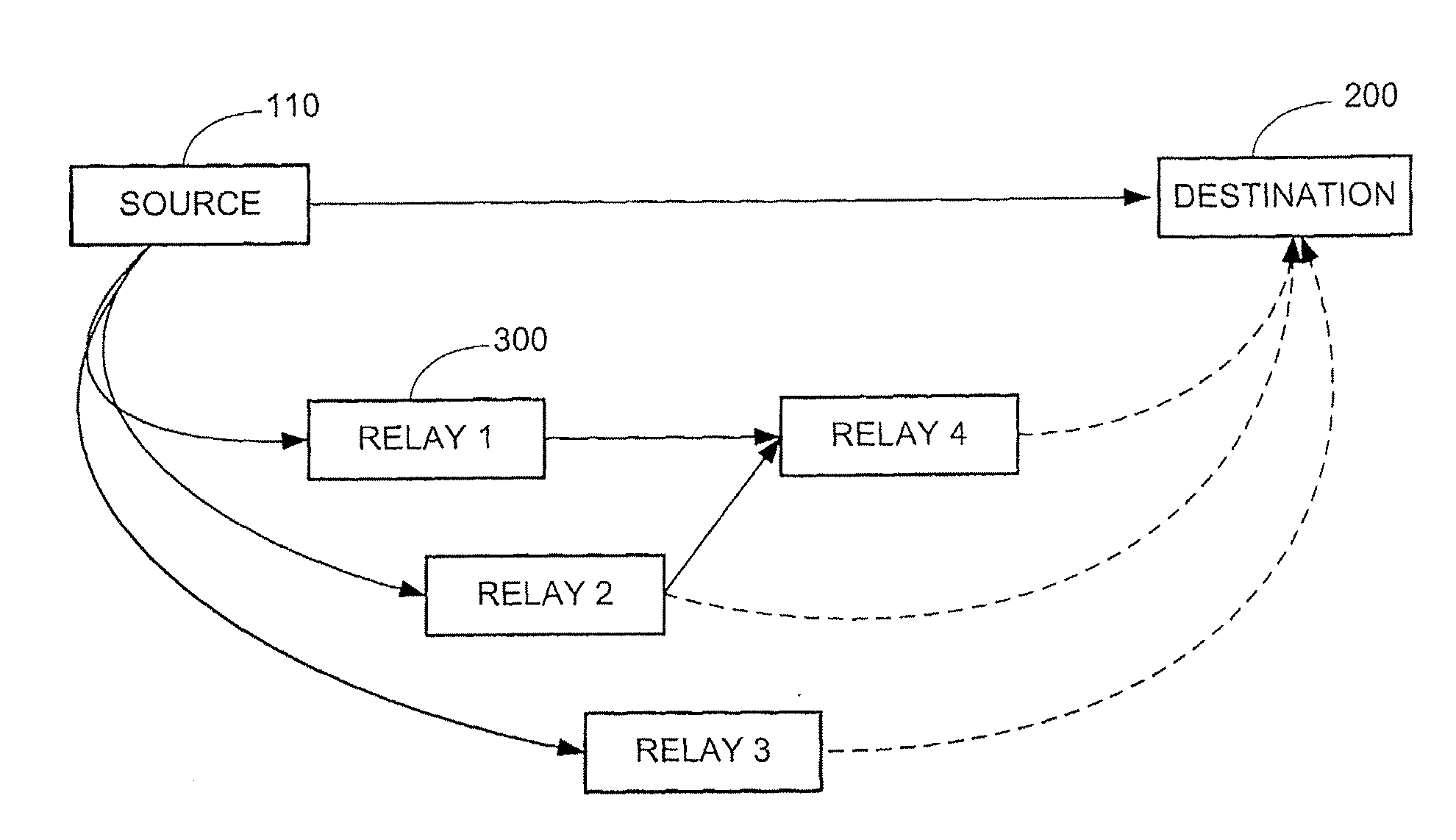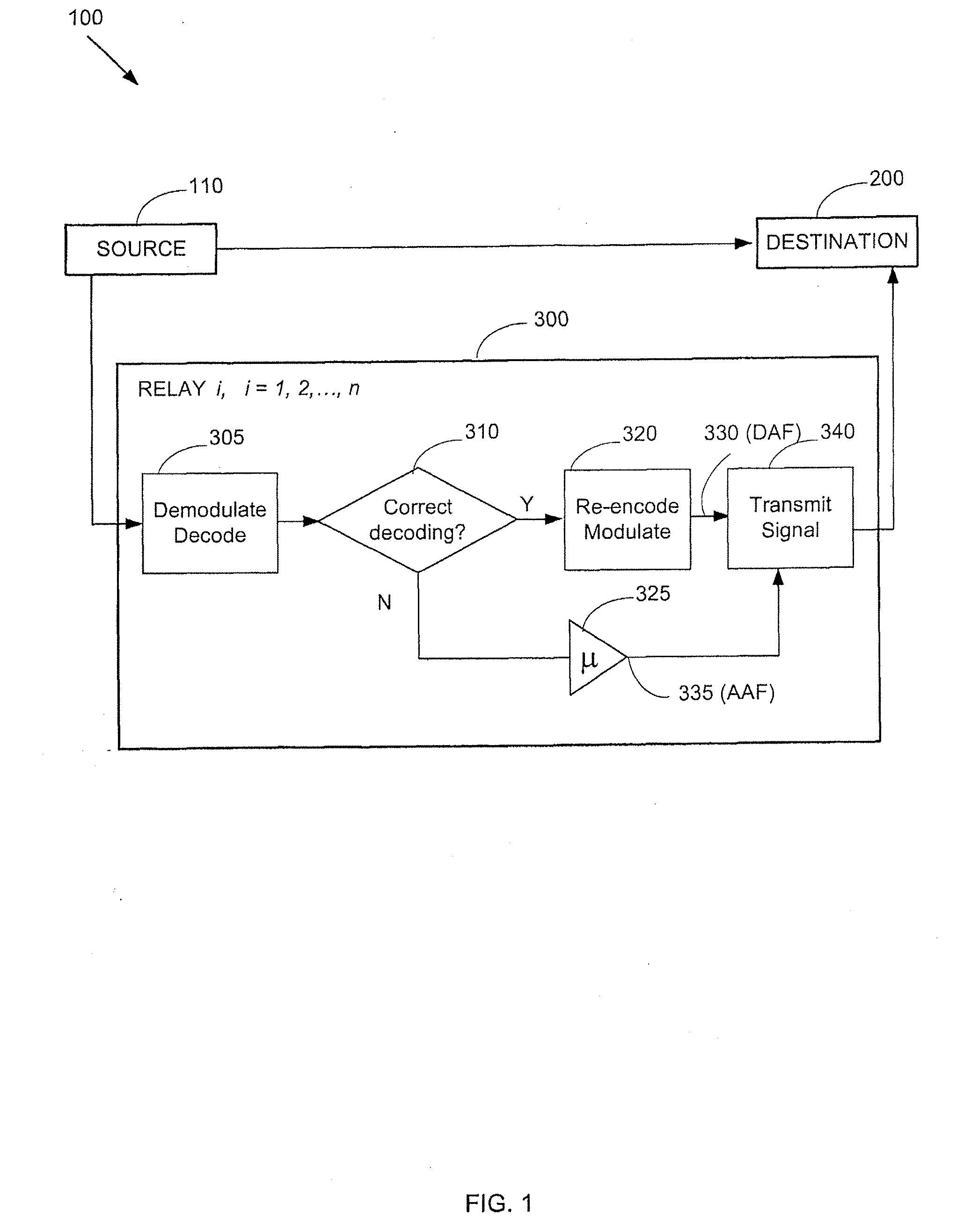Ditributed turbo coding and relaying protocols
a technology of distributed turbo and relaying protocols, which is applied in the direction of code conversion, frequency-division multiplex, etc., can solve the problem that it is not possible for mobile terminals or wireless sensor nodes to equip with multiple transmit antennas, and achieve the best transmit signal-to-noise ratio (snr), facilitate system design, and improve system performance and capacity.
- Summary
- Abstract
- Description
- Claims
- Application Information
AI Technical Summary
Benefits of technology
Problems solved by technology
Method used
Image
Examples
Embodiment Construction
[0057]Referring first to FIG. 1, we consider a general 2-hop relay network 100, consisting of one source 110, n relays 300 and one destination 200 with a direct link from the source 110 to the destination 200. There may be more than one relay between the source 110 and the destination 200, forming a multi-hop network.
[0058]At the source 110, the transmitted source information binary stream, denoted by B, is represented by
B=(b(1), . . . , b(k), . . . , b(l)) (1)
where b(k) is a binary symbol transmitted at time k and l is the frame length.
[0059]The binary information sequence B is first encoded by a channel encoder. For simplicity, we consider a recursive systematic convolutional code (RSCC) with a code rate of ½. Let C represent the corresponding codeword, given by
C=(C(1), . . . C(k), . . . , C(l)) (2)
where C(k)=(b(k), c(k) is the codeword of b(k), c(k)ε{0, 1}, b(k) is the information symbol and c(k) is the corresponding parity symbol.
[0060]The binary symbol stream C is then mapped...
PUM
 Login to View More
Login to View More Abstract
Description
Claims
Application Information
 Login to View More
Login to View More - R&D
- Intellectual Property
- Life Sciences
- Materials
- Tech Scout
- Unparalleled Data Quality
- Higher Quality Content
- 60% Fewer Hallucinations
Browse by: Latest US Patents, China's latest patents, Technical Efficacy Thesaurus, Application Domain, Technology Topic, Popular Technical Reports.
© 2025 PatSnap. All rights reserved.Legal|Privacy policy|Modern Slavery Act Transparency Statement|Sitemap|About US| Contact US: help@patsnap.com



